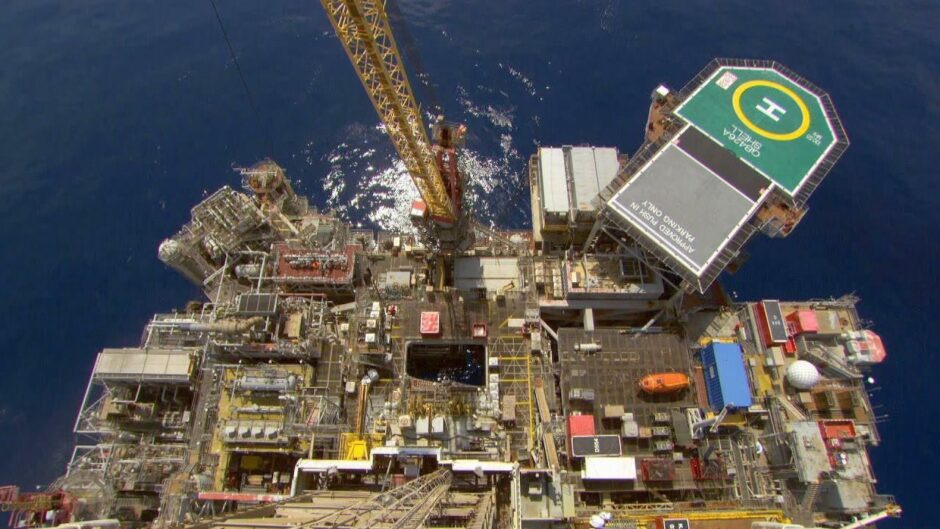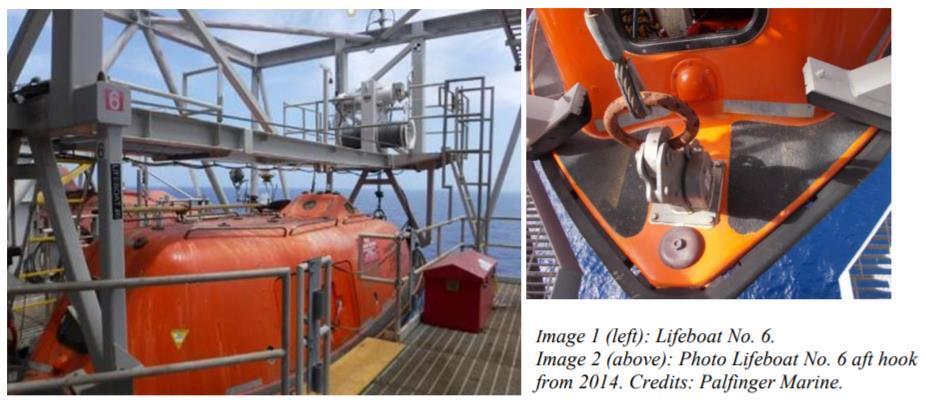
A report containing the findings of an investigation into a fatal accident on a Shell platform in the US has been released.
Two people were killed during the incident on board the oil major’s Auger floating OCS facility in the Gulf of Mexico on June 30, 2019, when a hook holding a lifeboat inadvertently opened.
As the lifeboat, manufactured by Palfinger Marine, was being winched back into position following a training exercise, the “aft hook” unlocked, causing the craft to swing away from the platform in a “pendulum” motion.
A matter of seconds the hook holding the lifeboat came away and the lifeboat fell around 25 metres into the sea, landing upturned in the water.
Two people who were still in the boat when it fell were killed, while another, who was exiting the craft at the time, was hurt.
Despite his injuries, he swam to the nearby lifeboat and was able to recover one of the crewmembers on board.
Following the accident, an investigation into its causes was launched involving the US Coast Guard, Shell and Palfinger Marine.
Causes
According to evidence collected by the study, it is “probable” that the crew cycled – open to closed position – the hooks “two times while in the water”.
That put additional stress on the “cable conduit”, which was “already compromised”, including “compression and stretching”.
The report said it is “probable that during the second cycling event, the conduit, already weakened and damaged, separated during the closing action”.
As a result, when it reset, the “locking shaft” didn’t return to the fully closed position, but rather came to rest in an “almost open” position.
At that stage it could support the weight of the lifeboat but when additional forces were applied, as a result of the winch pulling the craft up against the bumpers, the locking shaft rotated from “almost open” to open.
Earlier that same month, during an annual inspection, the unsafe condition of the cables were flagged by Palfinger, which recommended that they be replaced.
Shell
Shell did not act on the advice, in part perhaps because Palfinger service engineers made “overarching statements” that “all systems [were] found to be [in] correct working order” and the lifeboats could be returned to service, the report said.
In its findings the US Coast Guard has made ten safety recommendations, ranging from updating current policy on drill and maintenance requirements to developing regulations ensuring oversight of lifeboat, winch and davit repairs.
A further eight administrative recommendations were put forward, including sharing the investigations finding publicly.
A Shell spokeswoman said: “Following an incident at the Auger TLP on June 30, 2019, in which two fatalities and one non-life-threatening injury were sustained, Shell cooperated with the United States Coast Guard (USCG) in that agency’s investigation. In addition, we conducted our own internal investigation and shared findings with the USCG.
“The incident occurred during a routine, mandatory test of lifeboat launch and retrieval capabilities at Auger, located 214 miles south of New Orleans in the U.S. Gulf of Mexico.
“Shell’s internal investigation found that the combination of (1) damage to the control cable on the lifeboat, and (2) a winch fall wire configuration that resulted in the boat not hanging level in the davit, which may have generated excessive force against the bumper when winching, likely worked to result in the opening of the aft on-load release hook at height.
“In the over forty years that Shell has operated in the deepwater Gulf of Mexico we have strived, above all, to ensure our people go home safely to their loved ones. It’s devastating when they do not. We deeply regret this loss of life within our Shell family and community.”

 © Supplied by Palfinger Marine
© Supplied by Palfinger Marine